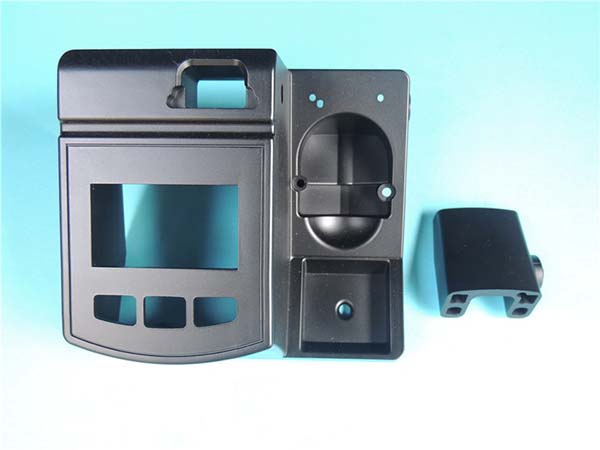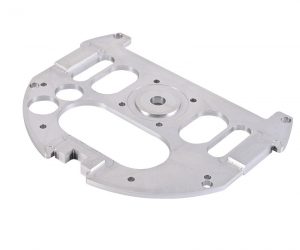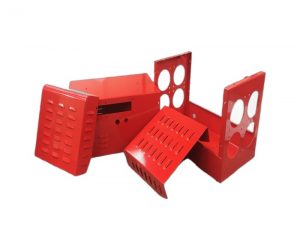1. Introduction: The Material Revolution in Manufacturing
In the ever - evolving landscape of manufacturing, Additively Manufactured Materials (AMMs) are emerging as a game - changer, heralding a new era of innovation. Traditional manufacturing methods, such as subtractive and formative processes, have long been the norm, but they come with their own set of limitations. Subtractive manufacturing, for instance, involves removing material from a larger block to create the desired shape, resulting in significant material waste. Formative processes, like casting and forging, often require complex molds e tooling, which can be time - consuming and expensive to produce.
AMMs, on the other hand, are produced through additive manufacturing techniques, also known as 3D printing. These processes build objects layer by layer from a digital model, allowing for the creation of highly complex geometries that were previously impossible or extremely difficult to achieve with traditional methods. This not only offers unprecedented design freedom but also has far - reaching implications for various industries in terms of cost - effectiveness, sustainability, and product performance.
This growth can be attributed to several factors. Firstly, the increasing demand for customized products across industries, from personalized medical implants to custom - designed consumer goods, has driven the adoption of additive manufacturing and, consequently, the development of AMMs. Secondly, continuous research and development efforts are leading to the creation of new and improved materials that offer better mechanical, thermal, and chemical properties, making them suitable for a wider range of applications. Thirdly, the decreasing cost of additive manufacturing equipment and materials is making the technology more accessible to small and medium - sized enterprises (SMEs), further fueling the growth of the market.
To better understand the impact of AMMs, let's take a look at a comparison between traditional manufacturing materials and additively manufactured materials in terms of design flexibility, material waste, and production time (Yigu Technology Table 1).
| Comparison Aspect | Traditional Manufacturing Materials | Additively Manufactured Materials |
| Design Flexibility | Limited by the capabilities of molds and tooling. Complex geometries may require multiple steps and high costs. | High - can create intricate and customized designs with ease, limited only by the digital model. |
| Material Waste | High, especially in subtractive manufacturing processes. Material is removed from a larger block to achieve the final shape. | Low - typically less than 10% material waste as the object is built layer by layer, adding only the necessary material. |
| Production Time | Long, especially for complex parts that require multiple manufacturing steps and tooling changes. | Short - rapid prototyping and production are possible, with some small parts being produced in a matter of hours. |
As we can see from the Yigu Technology table, AMMs offer clear advantages over traditional manufacturing materials in several key areas. These advantages are enabling industries to reimagine product design, production processes, and supply chains, ultimately leading to a new wave of innovation across the manufacturing landscape. In the following sections, we will explore in detail how AMMs are being used in specific industries and the challenges and future prospects associated with this revolutionary technology.
2. Technical Foundations of Additively Manufactured Materials
2.1 Material Classes and Properties
AMMs span diverse categories tailored to specific needs:
- Metals & Alloys: Metals and their alloys are widely used in Yigu Technology additive manufacturing due to their high strength, excellent thermal and electrical conductivity, and good corrosion resistance. For example, titanium aluminide (TiAl) is increasingly being used in the aerospace industry. TiAl has a low density, high specific strength, and good high - temperature mechanical properties. It can withstand temperatures up to 650 - 750°C, making it suitable for components such as turbine blades in aircraft engines. Inconel 718 is another popular alloy. It has outstanding high - temperature strength, corrosion resistance, and fatigue resistance. It can maintain its mechanical properties even at temperatures up to 650°C, which is crucial for applications in the aerospace, power generation, and oil and gas industries. According to research, Inconel 718 components produced through additive manufacturing can have a fatigue life that is comparable to, or in some cases, even better than, those produced by traditional forging methods.
- Polymers: Polymers offer a range of advantages such as low density, high design flexibility, and good chemical resistance. Polyetheretherketone (PEEK) is a biocompatible polymer that is highly valued in the medical device industry. It has excellent mechanical properties, high temperature resistance, and chemical stability. PEEK can be used to manufacture implants like spinal cages and bone plates. High - strength polyamide 12 (PA12) is commonly used in the automotive parts manufacturing. It has good impact resistance, dimensional stability, and chemical resistance. PA12 can be 3D - printed into complex - shaped automotive components such as air ducts and interior trim parts, reducing the weight of the vehicle and improving fuel efficiency. In a study on automotive component lightweighting, it was found that replacing traditional metal parts with 3D - printed PA12 parts can lead to a weight reduction of up to 30 - 40%, while still meeting the required mechanical performance standards.
- Composites: Composites, such as carbon - fiber reinforced polymers (CFRP), combine the advantages of different materials to achieve superior properties. CFRP consists of carbon fibers embedded in a polymer matrix, usually epoxy resin. The carbon fibers provide high strength and stiffness, while the polymer matrix binds the fibers together and transfers the load between them. CFRP is widely used in applications where lightweight structures are required, such as in the aerospace and automotive industries. In the aerospace industry, CFRP is used to manufacture aircraft wings, fuselage sections, and engine components. It can significantly reduce the weight of the aircraft, leading to lower fuel consumption and increased range. For Yigu Technology example, in some modern commercial aircraft, up to 50% of the airframe structure is made of CFRP. In the automotive industry, CFRP can be used to make body panels, chassis components, and suspension parts, improving the vehicle's performance and fuel economy.
The following Yigu Technology table (Table 2) summarizes the key properties and typical applications of these three main classes of additively manufactured materials:
| Material Class | Key Properties | Typical Applications |
| Metals & Alloys | High strength, good thermal and electrical conductivity, corrosion resistance | Aerospace (turbine blades, engine components), automotive (engine parts, structural components), oil and gas (pipes, valves) |
| Polymers | Low density, high design flexibility, chemical resistance | Medical (implants, prosthetics), automotive (interior parts, lightweight components), consumer goods (custom - designed products) |
| Composites | High strength - to - weight ratio, stiffness, lightweight | Aerospace (aircraft structures, wings), automotive (body panels, chassis components), sports equipment (bicycle frames, golf clubs) |
4. AMMs vs. Traditional Materials: A Comparative Analysis
When evaluating the impact of Additively Manufactured Materials (AMMs), a direct comparison with traditional materials is essential. This analysis reveals the unique advantages and potential limitations of AMMs across multiple parameters.
4.1 Material Waste
One of the most significant differences between AMMs and traditional materials lies in material waste. In traditional manufacturing, especially subtractive processes like machining, material waste can be extremely high. For Yigu Technology example, in the production of complex metal components, up to 30 - 70% of the original material may be discarded as waste. This is because subtractive manufacturing involves removing material from a larger block to create the desired shape.
In contrast, additive manufacturing processes are much more efficient in terms of material usage. With AMMs, the object is built layer by layer, adding only the necessary material. As a result, material waste is typically less than 10%. This not only reduces the cost associated with raw materials but also has significant environmental benefits by minimizing the amount of waste that needs to be disposed of. For instance, a study by the Oak Ridge National Laboratory found that when manufacturing a titanium component through additive manufacturing, the material waste was reduced by over 80% compared to traditional machining methods. This not only saved on the cost of titanium, which is an expensive metal, but also reduced the energy required to mine, process, and transport the additional material that would have been wasted in traditional manufacturing.
4.2 Design Complexity
Traditional manufacturing methods are often limited by the capabilities of molds and tooling. Creating complex geometries with traditional techniques can be extremely challenging, time - consuming, and costly. For Yigu Technology example, in injection molding, the design of the mold restricts the complexity of the final product. Intricate internal channels or lattices, which are highly desirable for applications such as heat exchangers or lightweight structural components, are very difficult to produce using traditional methods.
AMMs, on the other hand, offer unparalleled design freedom. They can create highly complex internal structures, such as internal channels for fluid flow or lattice structures for lightweight yet strong components. The only limit to the design complexity of AMMs is the digital model used to create them. Aeronautical engineers can design and produce turbine blades with complex internal cooling channels using additive manufacturing. These cooling channels are crucial for improving the efficiency and lifespan of the turbine blades in aircraft engines, but they would be nearly impossible to create using traditional casting or forging methods.
4.3 Tensile Strength
Tensile strength is an important mechanical property that determines the ability of a material to withstand stretching forces. When comparing AMMs and traditional materials, the tensile strength can vary depending on the specific materials and manufacturing processes involved. For example, cast aluminum, a commonly used traditional material in the automotive and aerospace industries, typically has a tensile strength in the range of 450 - 800 MPa.
In contrast, some additively manufactured metal materials can exhibit significantly higher tensile strengths. Titanium aluminide (TiAl), when produced through additive manufacturing, can have a tensile strength in the range of 600 - 1,200 MPa. This higher tensile strength makes TiAl components more suitable for applications where high - strength materials are required, such as in the aerospace industry for components like engine parts and structural elements. However, it's important to note that the tensile strength of AMMs can also be affected by factors such as the printing process parameters, post - processing treatments, and the presence of any defects in the printed parts.
4.4 Lead Time (Prototyping)
The lead time for prototyping is another area where AMMs have a distinct advantage over traditional materials. In traditional manufacturing, prototyping can be a time - consuming process. It often involves multiple steps, including the design and production of molds or tooling, which can take a significant amount of time. For complex parts, the prototyping lead time can be 5 - 10 days or even longer.
With additive manufacturing, the prototyping process is much faster. Once the digital model is created, it can be directly fed into the 3D printer, and the prototype can be produced in a relatively short time. Small - scale prototypes can often be produced within 1 - 3 days. This rapid prototyping capability allows companies to quickly test and iterate on their designs, reducing the overall product development cycle. For example, a startup developing a new consumer product can use additive manufacturing to quickly produce multiple prototypes of their product design. They can then test these prototypes with potential customers, gather feedback, and make design improvements in a much shorter time frame compared to using traditional prototyping methods.
The following Yigu Technology table summarizes the key differences between AMMs and traditional materials:
| Parameter | Additively Manufactured Materials | Traditional Materials |
| Material Waste | <10% | 30–70% |
| Design Complexity | Internal channels/lattices | Limited by tooling |
| Tensile Strength (MPa) | 600–1,200 (TiAl) | 450–800 (Cast Aluminum) |
| Lead Time (Prototyping) | 1–3 days | 5–10 days |
This comparison clearly demonstrates that AMMs offer significant advantages in terms of material waste reduction, design flexibility, and prototyping speed. While traditional materials still have their place in certain applications, the unique capabilities of AMMs are enabling new levels of innovation across various industries.
7. FAQ
Q1: Can additively manufactured materials meet high - precision industry standards like those in aerospace and automotive sectors?
A: Yes. Materials like TiAl and Inconel 718 meet ISO 2768 standards for aerospace and automotive use.
Q2: Are additively manufactured materials cost - effective compared to traditional materials?
A: AMMs reduce prototyping costs by 70% for low volumes but require higher upfront investment in equipment.
Q3: What are the main challenges in the widespread adoption of additively manufactured materials?
A: Workforce training. Initiatives like the aim to certify 100,000 technicians by 2026. This structured approach combines technical depth, real - world data, and forward - looking insights to demonstrate how additively manufactured materials are reshaping modern innovation. By balancing precision, sustainability, and design freedom, AMMs continue to redefine what’s possible in manufacturing.


